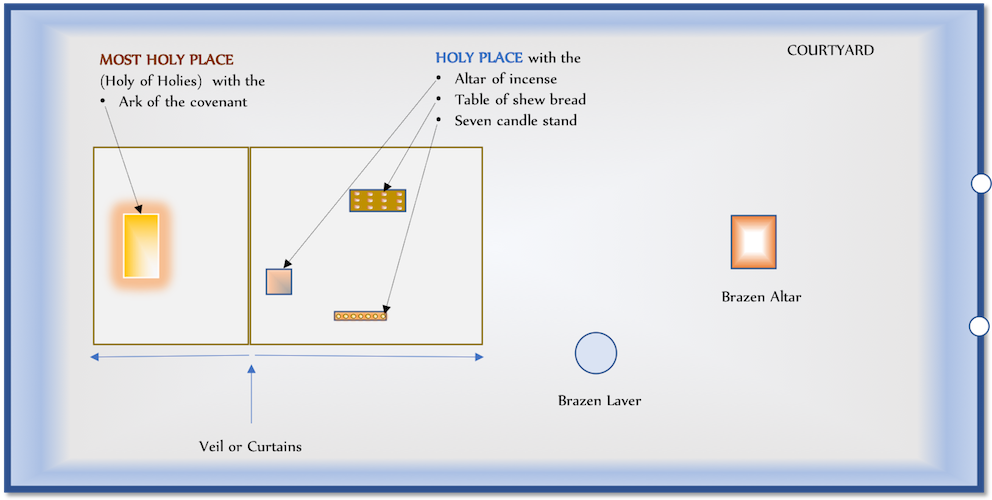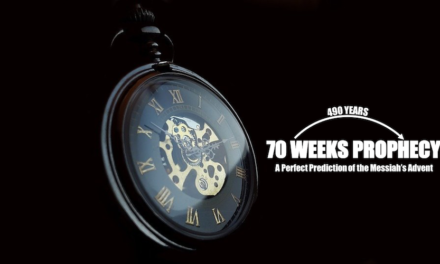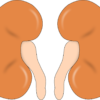The earthly sanctuary, built after Israel’s Exodus from Egypt, was an illustration of the Plan of Salvation and a type or reflection of the Heavenly Sanctuary where Jesus is now High Priest. It reveals how Christ’s ministry in the heavenly sanctuary is equally essential to our salvation as was His sacrifice on the Cross. It gives us a better understanding of books of the Old Testament, especially Leviticus, as we will see shortly, which otherwise may seem incomprehensible.
Why were they to build a sanctuary and how did Moses know how to build it? Exodus 25:8-9
“8 And let them make me a sanctuary; that I may dwell among them. 9 According to all that I shew thee, after the pattern of the tabernacle, and the pattern of all the instruments thereof, even so shall ye make it.”
The New Testament gives us an overview of the sanctuary, how many apartments are there? Hebrews 9:1-3
“9 Then verily the first covenant had also ordinances of divine service, and a worldly sanctuary. 2 For there was a tabernacle made; the first, wherein was the candlestick, and the table, and the shewbread; which is called the sanctuary. 3 And after the second veil, the tabernacle which is called the Holiest of all;”.
What furniture is found in the sanctuary? Exodus 40:1-8
“1 And the LORD spake unto Moses, saying, 2 On the first day of the first month shalt thou set up the tabernacle of the tent of the congregation. 3 And thou shalt put therein the ark of the testimony, and cover the ark with the vail. 4 And thou shalt bring in the table, and set in order the things that are to be set in order upon it; and thou shalt bring in the candlestick, and light the lamps thereof. 5 And thou shalt set the altar of gold for the incense before the ark of the testimony, and put the hanging of the door to the tabernacle. 6 And thou shalt set the altar of the burnt offering before the door of the tabernacle of the tent of the congregation. 7 And thou shalt set the laver between the tent of the congregation and the altar, and shalt put water therein. 8 And thou shalt set up the court round about, and hang up the hanging at the court gate.” (See also Exodus 40:20-34 for the fulfilment of the command; while Hebrews 9:1-5 gives us an overview description from the New Testament.)
What was a person to do if they had sinned? Leviticus 4:27-29
“27 And if any one of the common people sin through ignorance, while he doeth somewhat against any of the commandments of the LORD concerning things which ought not to be done, and be guilty; 28 Or if his sin, which he hath sinned, come to his knowledge: then he shall bring his offering, a kid of the goats, a female without blemish, for his sin which he hath sinned. 29 And he shall lay his hand upon the head of the sin offering, and slay the sin offering in the place of the burnt offering.” (See also Romans 6:23, which tells us that the wages of sin is death. Here, sin is symbolically transferred to the animal, which is killed in sinner’s stead.)
What happened to the blood and the fat of the sin offering? Leviticus 4:30-31
“30 And the priest shall take of the blood thereof with his finger, and put it upon the horns of the altar of burnt offering, and shall pour out all the blood thereof at the bottom of the altar. 31 And he shall take away all the fat thereof, as the fat is taken away from off the sacrifice of peace offerings; and the priest shall burn it upon the altar for a sweet savour unto the Lord; and the priest shall make an atonement for him, and it shall be forgiven him.” (See verses 6-12 which reveals the whole procedure when the blood of the sin offering is brought into the sanctuary.)
How then was the person’s sin transferred into the sanctuary? Leviticus 10:17-18
“17 Wherefore have ye not eaten the sin offering in the holy place, seeing it is most holy, and God hath given it you to bear the iniquity of the congregation, to make atonement for them before the LORD? 18 Behold, the blood of it was not brought in within the holy place: ye should indeed have eaten it in the holy place, as I commanded.”
What happed with the sacrifice whose blood was brought into the sanctuary? Leviticus 6:30
“30 And no sin offering, whereof any of the blood is brought into the tabernacle of the congregation to reconcile withal in the holy place, shall be eaten: it shall be burnt in the fire.” (See also Leviticus 4:12 confirming this.)
Is the New Testament in agreement with the Old Testament passage above? Hebrews 13:11
“11 For the bodies of those beasts, whose blood is brought into the sanctuary by the high priest for sin, are burned without the camp.” (See Hebrews 13:10–16 for context and application for today.)
God marks a difference between extent of the influence people have. The sin offering of the priest and congregation as a whole was normally a bullock, an expensive beast, and its blood was put on the altar of incense in the Holy place. Next in line was the ruler, who had to bring a male kid, and thirdly the common person who brought a female kid. The blood of these last two sin offerings were normally put on the horns of the altar of burnt offering, and their sins transferred by the priest eating the remainder of the sin offering in the Holy Place. (See Leviticus 4:3-26 for context.)
How many main sanctuary services were completed by the priest in order to atone for people’s sins? Hebrews 9:6-7
“6 Now when these things were thus ordained, the priests went always into the first tabernacle, accomplishing the service of God. 7 But into the second went the high priest alone once every year, not without blood, which he offered for himself, and for the errors of the people:”
We’ve seen what the daily services meant, let us now consider the proceedings and purpose of the annual service.
What day in the year did the annual ceremony take place and why is referred to as the Day of Atonement? Leviticus 16:30, 34
“29 And this shall be a statute for ever unto you: that in the seventh month, on the tenth day of the month, ye shall afflict your souls, and do no work at all, whether it be one of your own country, or a stranger that sojourneth among you: 30 For on that day shall the priest make an atonement for you, to cleanse you, that ye may be clean from all your sins before the LORD. … 34 And this shall be an everlasting statute unto you, to make an atonement for the children of Israel for all their sins once a year. And he did as the LORD commanded Moses.”
What was the whole purpose of the ceremonies that day? Leviticus 16:18-19, 29-30
“18 And he shall go out unto the altar that is before the LORD, and make an atonement for it; and shall take of the blood of the bullock, and of the blood of the goat, and put it upon the horns of the altar round about. 19 And he shall sprinkle of the blood upon it with his finger seven times, and cleanse it, and hallow it from the uncleanness of the children of Israel. … 29 And this shall be a statute for ever unto you: that in the seventh month, on the tenth day of the month, ye shall afflict your souls, and do no work at all, whether it be one of your own country, or a stranger that sojourneth among you: 30 For on that day shall the priest make an atonement for you, to cleanse you, that ye may be clean from all your sins before the LORD.” (See also 2 Corinthians 13:5 and 1 Timothy 5:24 which indicates what afflicting your soul means, while Leviticus 16:15-19, 29-31 gives us the context.)
How could the priest not die in the immediate presence of God’s manifestation? Leviticus 16:11-14
“11 And Aaron shall bring the bullock of the sin offering, which is for himself, and shall make an atonement for himself, and for his house, and shall kill the bullock of the sin offering which is for himself: 12 And he shall take a censer full of burning coals of fire from off the altar before the LORD, and his hands full of sweet incense beaten small, and bring it within the vail: 13 And he shall put the incense upon the fire before the LORD, that the cloud of the incense may cover the mercy seat that is upon the testimony, that he die not: 14 And he shall take of the blood of the bullock, and sprinkle it with his finger upon the mercy seat eastward; and before the mercy seat shall he sprinkle of the blood with his finger seven times.”
What else was the priest required to present alive before God, only on the Day of Atonement? Leviticus 16:5-10
“5 And he shall take of the congregation of the children of Israel two kids of the goats for a sin offering, and one ram for a burnt offering. 6 And Aaron shall offer his bullock of the sin offering, which is for himself, and make an atonement for himself, and for his house. 7 And he shall take the two goats, and present them before the LORD at the door of the tabernacle of the congregation. 8 And Aaron shall cast lots upon the two goats; one lot for the LORD, and the other lot for the scapegoat. 9 And Aaron shall bring the goat upon which the LORD’s lot fell, and offer him for a sin offering. 10 But the goat, on which the lot fell to be the scapegoat, shall be presented alive before the LORD, to make an atonement with him, and to let him go for a scapegoat into the wilderness.”
What specifically happened to the goat upon which the LORD’s lot fell? Leviticus 16:15-16
“15 Then shall he kill the goat of the sin offering, that is for the people, and bring his blood within the vail, and do with that blood as he did with the blood of the bullock, and sprinkle it upon the mercy seat, and before the mercy seat: 16 And he shall make an atonement for the holy place, because of the uncleanness of the children of Israel, and because of their transgressions in all their sins: and so shall he do for the tabernacle of the congregation, that remaineth among them in the midst of their uncleanness.”
On the this day, what was the scape goat’s part in disposing of of the congregation’s annual culmination of sins in the sanctuary? Leviticus 16:20-22
“20 And when he hath made an end of reconciling the holy place, and the tabernacle of the congregation, and the altar, he shall bring the live goat: 21 And Aaron shall lay both his hands upon the head of the live goat, and confess over him all the iniquities of the children of Israel, and all their transgressions in all their sins, putting them upon the head of the goat, and shall send him away by the hand of a fit man into the wilderness: 22 And the goat shall bear upon him all their iniquities unto a land not inhabited: and he shall let go the goat in the wilderness.”
If the sending scapegoat away wasn’t a clear end of the ceremony, what else indicated the annual end of dealing with sins? Leviticus 16:23-24
“23 And Aaron shall come into the tabernacle of the congregation, and shall put off the linen garments, which he put on when he went into the holy place, and shall leave them there: 24 And he shall wash his flesh with water in the holy place, and put on his garments, and come forth, and offer his burnt offering, and the burnt offering of the people, and make an atonement for himself, and for the people.”
Who did the slain animals in view really point to? John 1:29
“29 The next day John seeth Jesus coming unto him, and saith, Behold the Lamb of God, which taketh away the sin of the world.” (See also Isaiah 53:7, while 1 Pet 1:18-19, confirms that it’s by Christ’s precious blood that we are redeemed or saved from sins.)
By slaying the sacrifices, the Israelites were saved by faith in Christ by looking forward to what Jesus would do. We are saved today by looking back in faith.
Jesus is not only our sacrifice, who else in the earthly sanctuary ministry represented Him? Hebrews 8:1-3, 5
“1 Now of the things which we have spoken this is the sum: We have such an high priest, who is set on the right hand of the throne of the Majesty in the heavens; 2 A minister of the sanctuary, and of the true tabernacle, which the Lord pitched, and not man. 3 For every high priest is ordained to offer gifts and sacrifices: wherefore it is of necessity that this man have somewhat also to offer. … 5 Who serve unto the example and shadow of heavenly things, as Moses was admonished of God when he was about to make the tabernacle: for, See, saith he, that thou make all things according to the pattern shewed to thee in the mount.”
Where is He accomplishing His priestly work on our behalf? Hebrews 9:24
“24 For Christ is not entered into the holy places made with hands, which are the figures of the true; but into heaven itself, now to appear in the presence of God for us:” (See also 1 John 2:1 which tells us Christ is also our advocate, as He appears before God on our behalf.)
As an high priest, did Christ bring the blood of beast into the heavenly sanctuary? Hebrews 9:11-12
“11 But Christ being come an high priest of good things to come, by a greater and more perfect tabernacle, not made with hands, that is to say, not of this building; 12 Neither by the blood of goats and calves, but by his own blood he entered in once into the holy place, having obtained eternal redemption for us.”
How does Christ’s ministry in the Heavenly Sanctuary affect me? Hebrews 7:24-25
“24 But this man, because he continueth ever, hath an unchangeable priesthood. 25 Wherefore he is able also to save them to the uttermost that come unto God by him, seeing he ever liveth to make intercession for them.” (See also Romans 8:34 confirming that Christ intercedes for us, or intervenes on behalf with His blood before God.)
Having seen the benefits from Christ’s heavenly ministry, is it really necessary for our salvation? Hebrews 2:17
“17 Wherefore in all things it behoved him to be made like unto his brethren, that he might be a merciful and faithful high priest in things pertaining to God, to make reconciliation for the sins of the people.”
How is it possible for me to have access to the grace gained at the Cross and present mediation in heaven, which is so essential especially in time of pain and need? Hebrews 4:14-16
“14 Seeing then that we have a great high priest, that is passed into the heavens, Jesus the Son of God, let us hold fast our profession. 15 For we have not an high priest which cannot be touched with the feeling of our infirmities; but was in all points tempted like as we are, yet without sin. 16 Let us therefore come boldly unto the throne of grace, that we may obtain mercy, and find grace to help in time of need.”
He is able to keep us from sinning, but while we may fall trying not to sin, what keeps us from falling in and out of His grace? 1 John 2:1
“1 My little children, these things write I unto you, that ye sin not. And if any man sin, we have an advocate with the Father, Jesus Christ the righteous:” (See also Jude 24, which tells us He’s able to keep us from falling.)
Friend,
Praise God, for what Jesus is doing for us in Heaven! One day the sanctuary will close (Revelation 15:8) and our characters sealed for eternal life or eternal loss, so let us “seek the LORD while He may be found” (Isaiah 55:6).
Is it your desire not pull back from God, but come boldly to the throne of Grace, in the name of Jesus, to obtain mercy and find grace to help in time of need?
The earthly sanctuary, built after Israel’s Exodus from Egypt, was an illustration of the Plan of Salvation and a type or reflection of the Heavenly Sanctuary where Jesus is now High Priest. It reveals how Christ’s ministry in the heavenly sanctuary is equally essential to our salvation as was His sacrifice on the Cross. It gives us a better understanding of books of the Old Testament, especially Leviticus, as we will see shortly, which otherwise may seem incomprehensible. God marks a difference between extent of the influence people have. The sin offering of the priest and congregation as a whole was normally a bullock, an expensive beast, and its blood was put on the altar of incense in the Holy place. Next in line was the ruler, who had to bring a male kid, and thirdly the common person who brought a female kid. The blood of these last two sin offerings were normally put on the horns of the altar of burnt offering, and their sins transferred by the priest eating the remainder of the sin offering in the Holy Place. (See Leviticus 4:3-26 for context.) We’ve seen what the daily services meant, let us now consider the proceedings and purpose of the annual service. By slaying the sacrifices, the Israelites were saved by faith in Christ by looking forward to what Jesus would do. We are saved today by looking back in faith. Friend, Praise God, for what Jesus is doing for us in Heaven! One day the sanctuary will close (Revelation 15:8) and our characters sealed for eternal life or eternal loss, so let us “seek the LORD while He may be found” (Isaiah 55:6). Is it your desire not pull back from God, but come boldly to the throne of Grace, in the name of Jesus, to obtain mercy and find grace to help in time of need?Look up the verses yourself










